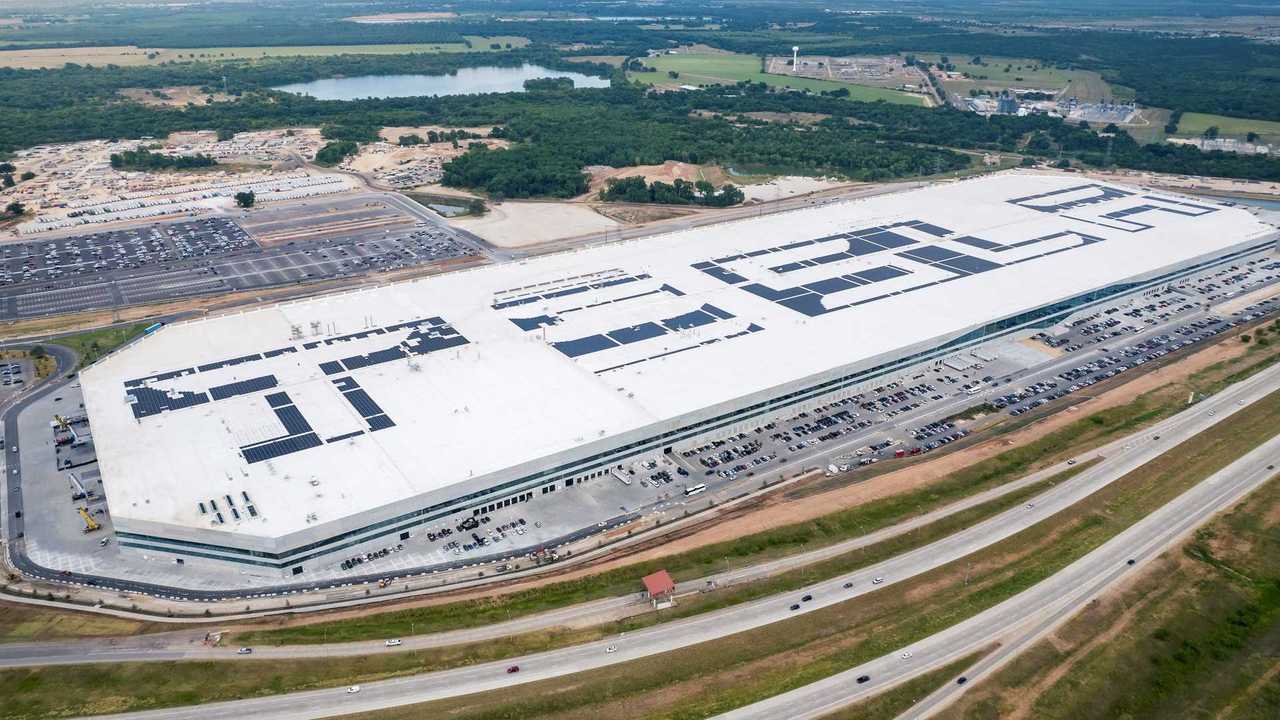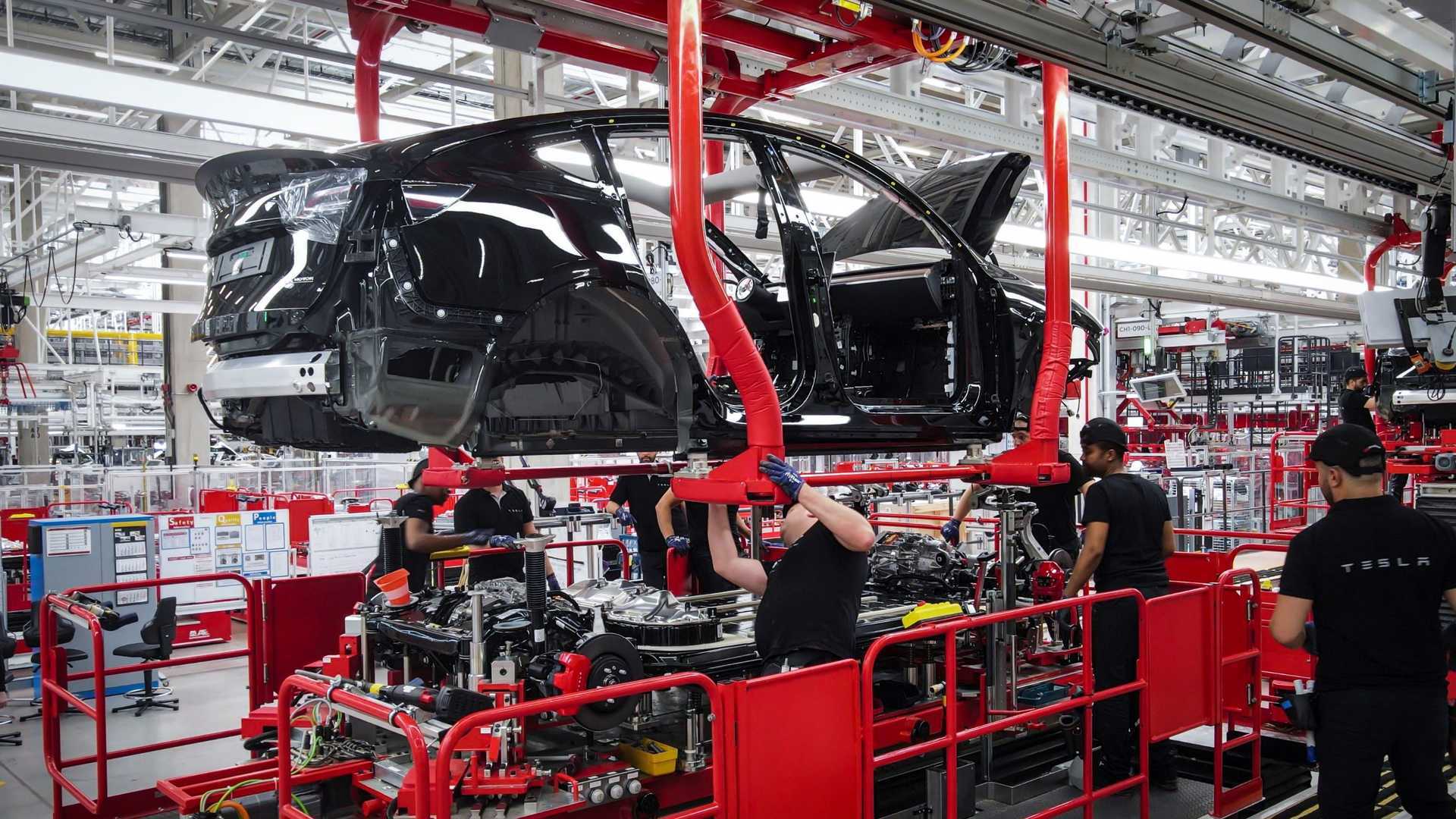Tesla, the world’s largest electric car manufacturer, in its latest quarterly report shows updated installed capacity info of four of its plants.
As it turns out, the company has the potential to produce 2 million electric cars annually (excluding further upgrades), compared to more than 1 million in the previous report. That’s over an 80 % increase compared to the previous report.
The plant in California is currently equipped for up to 650,000 BEVs, while the plant in Shanghai is ready for more than 750,000 units. It means that the Chinese plant is the largest site by volume.
On top of those two comes the two new plants – in Germany and in Texas – both with an installed capacity for more than 250,000 Tesla Model Y annually.
The installed capacity of more than 1.9 million does not mean that it is the current production rate, but that the plants could produce so many cars at full swing (after a ramp-up in the case of new plants).
For reference, Tesla produced and delivered more than 1.1 million BEVs during the previous four quarters, including over 250,000 in Q2 2022. One of the reports indicates a potential production in 2022 at 1.5 million.
Tesla reports that the production output is constrained, but in June, the company achieved the highest vehicle production month in its history.
“In Q2, we achieved record production rates across the company. However, we saw a continuation of manufacturing challenges related to shutdowns, global supply chain disruptions, labor shortages and logistics and other complications, which limited our ability to consistently run our factories at full capacity.”
Let’s summarize what we know about the Tesla manufacturing plants.
Tesla’s Fremont factory has the potential to produce up to 550,000 Model 3/Model Y a year (up by 50,000 compared to the previous info) plus up to 100,000 refreshed Model S/Model X.
“Our Fremont Factory made a record number of vehicles in Q2. We see opportunities for further production rate improvements.”

Tesla Factory in Fremont, California

Fremont Factory —2,000,000 Vehicles Produced
The Tesla Giga Shanghai plant has the potential to produce over 750,000 Model 3/Model Y per year, which is a massive increase compared to 450,000 previously (up 67%).
The plant remains the company’s export hub and currently is undergoing an upgrade.
“While the Shanghai factory was shut down fully and then partially for the majority of Q2, we ended the quarter with a record monthly production level. Recent equipment upgrades will enable us to continue to increase our production rate further.”

Tesla Giga Shanghai: Exterior (Tesla Q2 2022 report)

Tesla Giga Shanghai: General Assembly (Tesla Q2 2022 report)
Tesla Giga Berlin in Grünheide near Berlin in Germany produces the Tesla Model Y (powered by 2170-type cylindrical battery cells) since March 2022.
In June, the production rate reached a milestone of 1,000 units per month. The capacity is estimated at over 250,000 annually.
At a later point, the company intends to start production of a new version, powered by 4680-type cylindrical battery cells.
“Thanks to strong production rate improvement towards the end of Q2, our team in Germany produced more than 1,000 Model Y vehicles in a single week, using 2170 cells. We expect the production rate to continue improving through the rest of the year.”

Tesla Giga Berlin: Model Y General Assembly (Tesla Q2 2022 report)

Tesla Giga Berlin: Model Y Paint Shop (Tesla Q2 2022 report)
Tesla Giga Texas in Austin, Texas started production of the Tesla Model Y in April 2022. This version of the Model Y is equipped with 4680-type cylindrical cells and a structural battery pack.
However, because the supply of 4680-type cells is limited, the plant is now producing also the “legacy” version with 2170-type batteries and non-structural batteries.
To boost production, Tesla is preparing local production of 4680-type batteries.
“In Texas, we have added flexibility to produce vehicles with either a structural battery pack or legacy battery pack. The next generation of 4680 battery cell machinery has been installed in Texas and is in the process of commissioning. Factory output in Texas continues to grow.”
The overall production capacity at the plant is estimated at over 250,000 annually.
The launch of the Tesla Cybertruck, set for production in Texas, remains delayed until at least 2023.

Tesla Giga Texas: Solar Panels (Tesla Q2 2022 report)

Tesla Giga Texas: Body Shop (Tesla Q2 2022 report)
Tesla installed manufacturing capacity
- Total of over 1,900,000 per year (up to 650,000 at the Tesla Factory, over 750,000 at the Giga Shanghai and over 250,000 at the two new plants: Giga Berlin and Giga Texas).
Production sites (vehicles/battery systems)
- Tesla Factory in Fremont, California
- Model S/X (capacity of up to 100,000 annually) Model S since mid-2012, Model X since late 2015
- Model 3/Y (capacity of up to 550,000 annually now), Model 3 since mid-2017, Model Y since January 2020
- Total output of up to 650,000 S/X/3/Y
- Tesla Gigafactory 1 in Nevada
- Tesla Gigafactory 2 in New York
- Related to solar and some energy storage products
- Tesla Gigafactory 3 in Shanghai, China
- Model 3/Y (capacity of over 750,000 annually)
Model 3 since late 2019, Model Y since December 2020
- Model 3/Y (capacity of over 750,000 annually)
- Tesla Gigafactory 4 in Berlin-Brandenburg, Germany, Europe
- Model Y (capacity of over 250,000 annually)
Model Y since March 2022
- Model Y (capacity of over 250,000 annually)
- Tesla Gigafactory 5 in Austin, Texas
- Model Y (capacity of over 250,000 annually)
Model Y since April 2022 - Cybertruck: “in development”, unveiled in late 2019, production after the Model Y, but no earlier than in 2023
- Model Y (capacity of over 250,000 annually)
- Tesla Kato Road pilot facility in Fremont, California
- related to Tesla’s 4680-type cylindrical battery cells
target: 10 GWh/year cell production
- related to Tesla’s 4680-type cylindrical battery cells
- Tesla Megapack factory in Lathrop, California
- Unassigned models
- Semi: “in development”. Delayed to at least 2023 (but there might be a pilot deployment)
(it was expected that the Semi will be produced in Texas, according to Q2 2020 call, but it is unassigned yet) - Roadster: “in development”, probably will be assigned to Fremont Factory (our guess)
- “Robotaxi and Others”: “in development”, unassigned
- Semi: “in development”. Delayed to at least 2023 (but there might be a pilot deployment)


ivermectin 3 mg tablets for humans – candesartan cost order carbamazepine 200mg online cheap
doxycycline price – buy glipizide paypal order glucotrol 5mg pill
amoxiclav us – order generic cymbalta how to get duloxetine without a prescription
rybelsus 14mg price – order semaglutide 14mg for sale buy periactin without a prescription
buy cialis 5mg for sale – buy sildenafil 100mg pills brand viagra 100mg
atorvastatin 10mg pill – order lipitor 40mg online zestril 10mg uk
cost cenforce 50mg – cenforce where to buy glycomet oral
order omeprazole 20mg generic – omeprazole 10mg pills buy generic atenolol for sale
purchase cytotec sale – cytotec without prescription oral diltiazem
buy acyclovir tablets – zovirax 800mg sale buy cheap crestor
order motilium generic – cyclobenzaprine over the counter cyclobenzaprine 15mg price
buy motilium no prescription – buy domperidone 10mg generic purchase flexeril without prescription
inderal 20mg us – plavix 150mg drug methotrexate 5mg pills
warfarin 2mg cheap – buy generic maxolon buy hyzaar generic
order zofran 8mg generic – purchase ondansetron generic order zocor 20mg pills